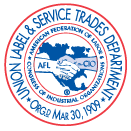Staying quiet when you see unsafe behavior in the workplace – like seeing a guy who doesn’t tie off on the roof – is the same as staying quiet when your coworker makes threats about self-harm. Yes, your coworker might not fall off the roof. Yes, your coworker might not go home and hurt herself. But can you imagine if she fell off that roof and you didn’t say anything? Can you imagine if she did kill herself and you didn’t speak up? It’s not a betrayal to want to protect your friends or coworkers. It’s brave.
With the pandemic still casting a shadow over workplaces, stress and mental health challenges are even more prevalent for today’s working families. You might find more than just a few of your coworkers are thinking about their problems and having difficulty coping.
According to a 2020 study by MetLife, 67 percent of workers are feeling even more stressed than before the pandemic. About 20 percent of adults experience symptoms of a mental illness every year in the U.S. and 61 percent report that stress affects their work. Pre-pandemic, mental health disorders and substance abuse issues cost U.S. employers between $79 and $105 billion a year in indirect costs.
In a workplace where mental health safety is emphasized just as much as physical safety, risks to worker safety are reduced. To be successful, employers must be proactive, not reactive, says Dr. Sagar Parikh, a professor of psychiatry and associate director of the University of Michigan Comprehensive Depression Center.
“Mental health problems exist everywhere,” Parikh says. “We know that in order to help people, we should go where they are rather than waiting for them to come to us.”
Workers may not know how or where to get help or what type of help they need, and they may be uncomfortable asking for assistance. To help, unions can proactively provide that information. Unionized workplaces are more likely to be equipped to deal with these challenges through the collective bargaining process.
For example, many of the unionized construction trades unions have created member assistance (MAP) programs that they fund through signatory contractor contributions. The Sheet Metal and Railway Transport Union (SMART) has SMART MAP, a mental health awareness and action program. The union trains mentors across the country who are compassionate, empathetic, and well-respected union members who, together with experts in the field of mental health, support members who may be dealing with mental health challenges or substance use disorder. The mentors help them access resources to deal with their challenges. They also have a 24/7 hotline for members or their families who may be in immediate crisis.
The Bricklayers and the International Union of Operating Engineers offer similar programs.
Other unions, like the American Federation of Teachers, have negotiated employee assistance programs at the local level, through their contracts. Modern EAPs are now more focused on employees’ health and mental well-being, instead of just focusing on quick treatments, and are now far more robust in their offerings.
Through resources like these, unions arm their members with options and opportunities for getting the support they need. A culture of workplace safety also needs to include an understanding of mental health challenges and how better mental health makes for safer, healthier workplaces. And doing that means that employees must feel empowered to speak up for better mental health.






